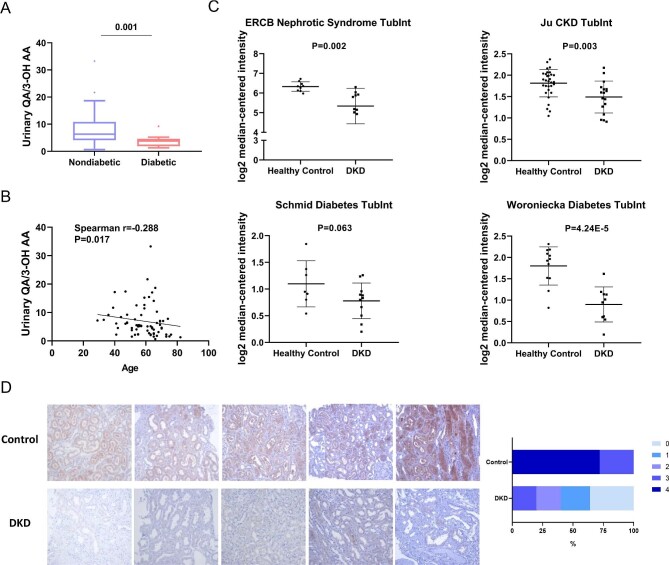Figure 4:
Urinary QA/3-OH AA and renal HAAO expression in AKI-susceptible subjects. (A) Diabetic patients (n = 16) had significantly lower urinary QA/3-OH AA than non-diabetic ones (n = 53). (B) Correlation analysis of urinary QA/-3-OH AA with age. The average urinary QA/3-OH AA of patients with multiple treatment courses in MTX cohort was used for analysis. (C) HAAO expression (log HAAO expression by microarray) in renal tubulointerstitial area of DKD patients compared with that of healthy controls (data from Nephroseq). (D) Representative immunohistochemical staining of HAAO in kidney biopsy from five patients diagnosed with DKD and five patients with minimal change disease (Control). Semi-quantification analysis suggested all slides from control groups had a staining intensity score more than 3 while 80% of slides from the DKD groups scored below 3.

